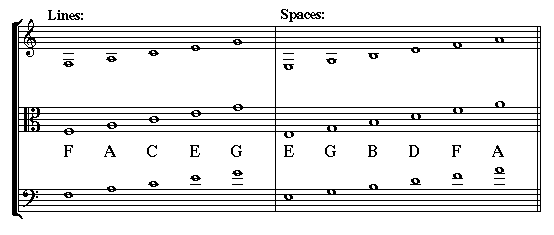SOUND PATTERNS
A Structural Examination of Tonality, Vocabulary, Texture,
Sonorities, and Time Organization in Western Art Music
by PHILLIP MAGNUSON


The history of Western Common Practice Period music is the history of melody, which is true of most cultures. The origin of melody stems from the use of the voice to intone words. Melodies, in the beginning, were undoubtedly simple and repetitious, and until recently (about five hundred years ago) remained that way. One of the unique features of Western musical culture was the invention of counterpoint (circa 1100 AD), which is the simultaneous juxtaposition of two lines or more.
Species counterpoint is a pedagogical summation of the musical patterns of counterpoint through the Renaissance up to the Baroque. The most famous teacher of these patterns is Johann Fux, who wrote the textbook Gradus ad Parnassum to educate musicians. Species counterpoint provided a standardized technique for theory studies for centuries; it was through species counterpoint that all composers of the Common Practice Period learned their craft.
Each species describes a different and specific context for the juxtaposition of notes:
These categories describe virtually any musical situation for that time period.
The rules presented for each species are really a compendium of patterns and observations made about music already written. Adhering to them will assure the student of an historically correct style. It is by no means a guarantee of writing beautiful music. Beauty, besides being in the eye of the beholder, belongs to the province of esthetics and philosophy, and is determined by historical placement, cultural experience, and personal taste. The goal of this text is simply to provide a mechanism for understanding how Western music is structured.
One of the important features of species counterpoint is the use of a cantus firmus, which translates as "unchangeable melody". Consequently, no alterations may be made to this tune as students write a new melody against the cantus firmus to create counterpoint.
Since species counterpoint describes music composed prior to the Common Practice Period, it is traditional to use the old church modes, which were presented in Chapter 2. In this text, the cantus firmus will always be presented in the alto clef, so you will need to learn how to read this new clef. There is only one foolproof way to do this: practice by labeling the lines and spaces. The middle line of alto clef is "middle C", and the lines and spaces are as follows:

Below are the twelve cantus firmi (the plural of cantus firmus) which you will be using with this text. Identify the mode of each one, and learn to sing them with letter names (in order to learn the alto clef).
1. |  |
|---|---|
2. |  |
3. |  |
4. |  |
5. |  |
6. |  |
7. |  |
8. |  |
9. |  |
10. |  |
11. |  |
12. |  |
Copyright © 2008-2009 by Phillip Magnuson.
Content on this website is licensed under a Creative Commons License.